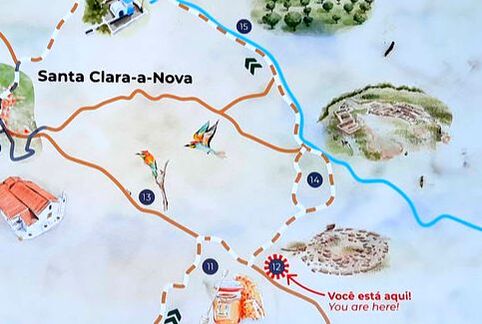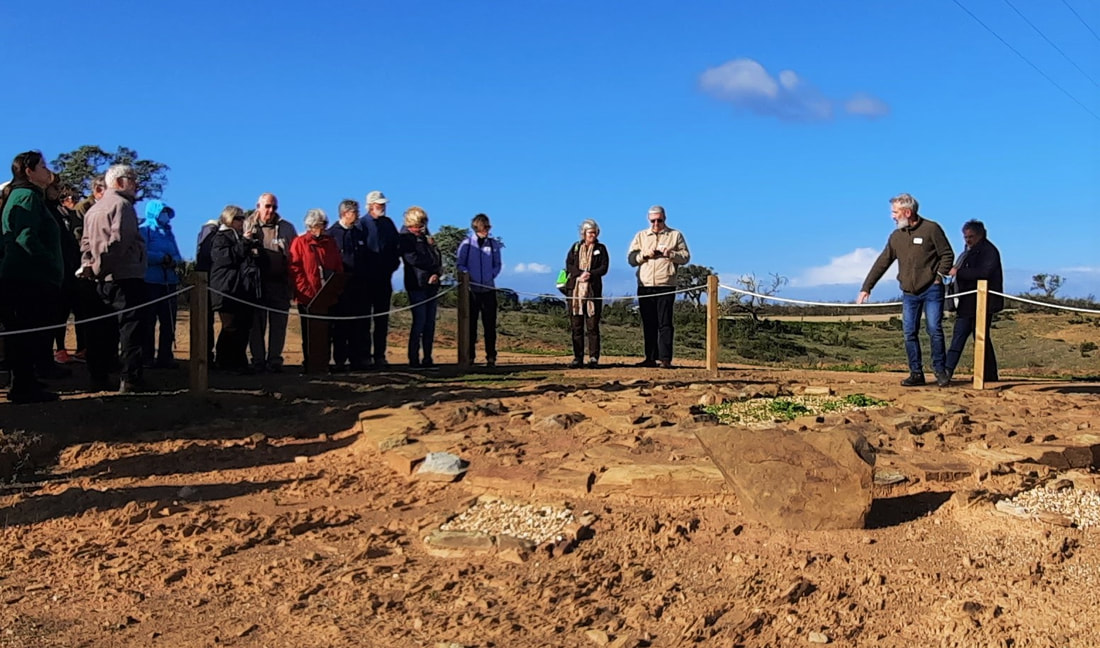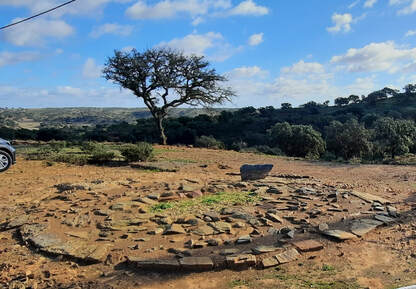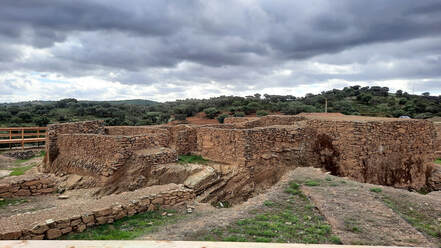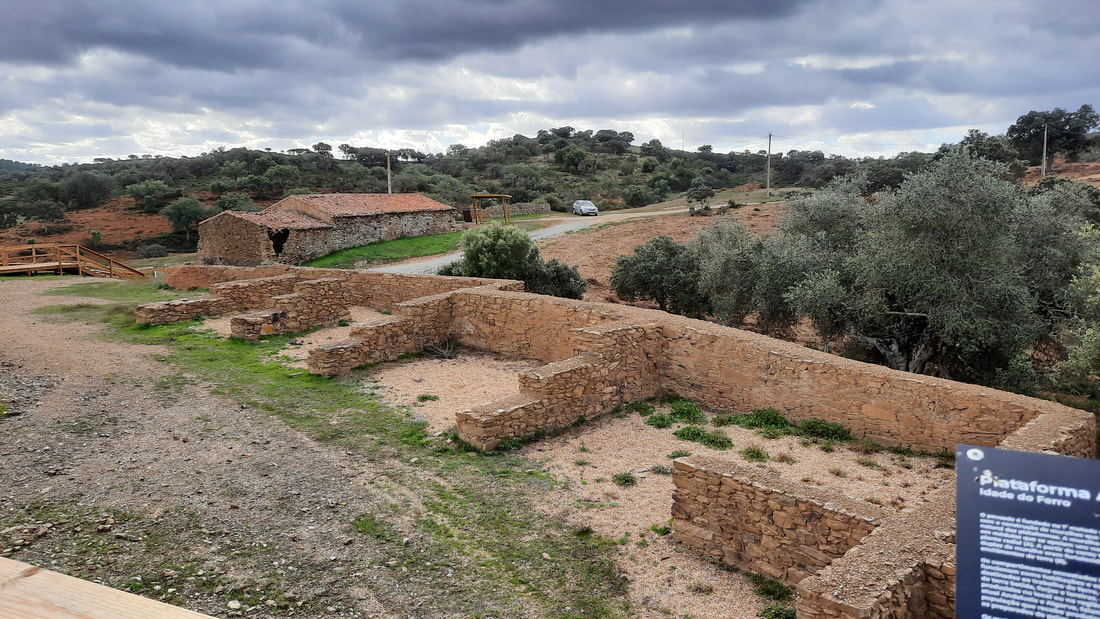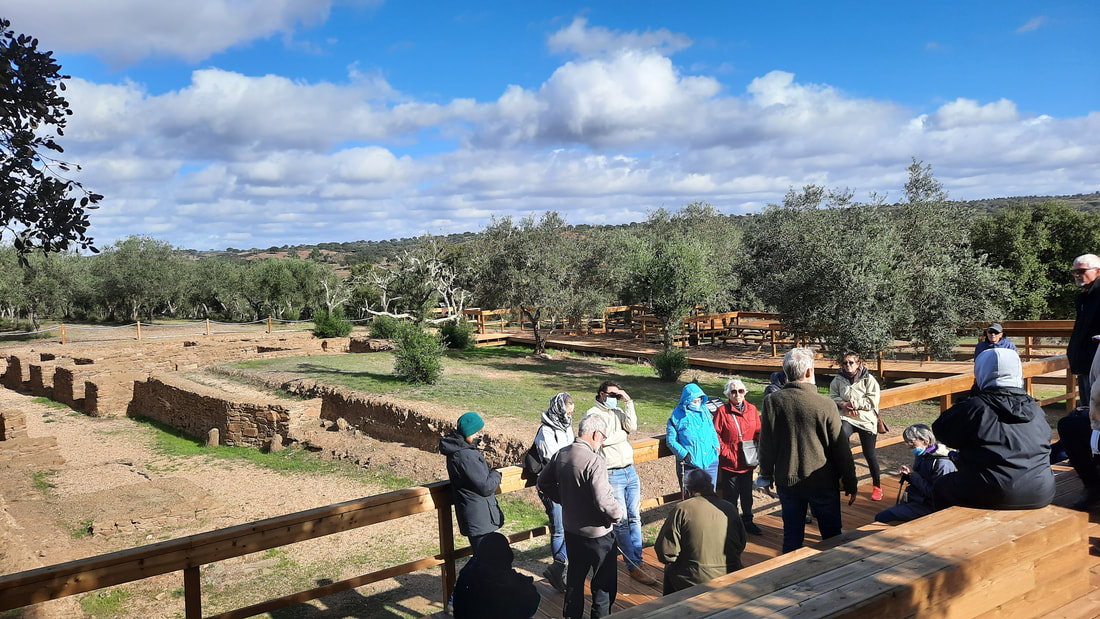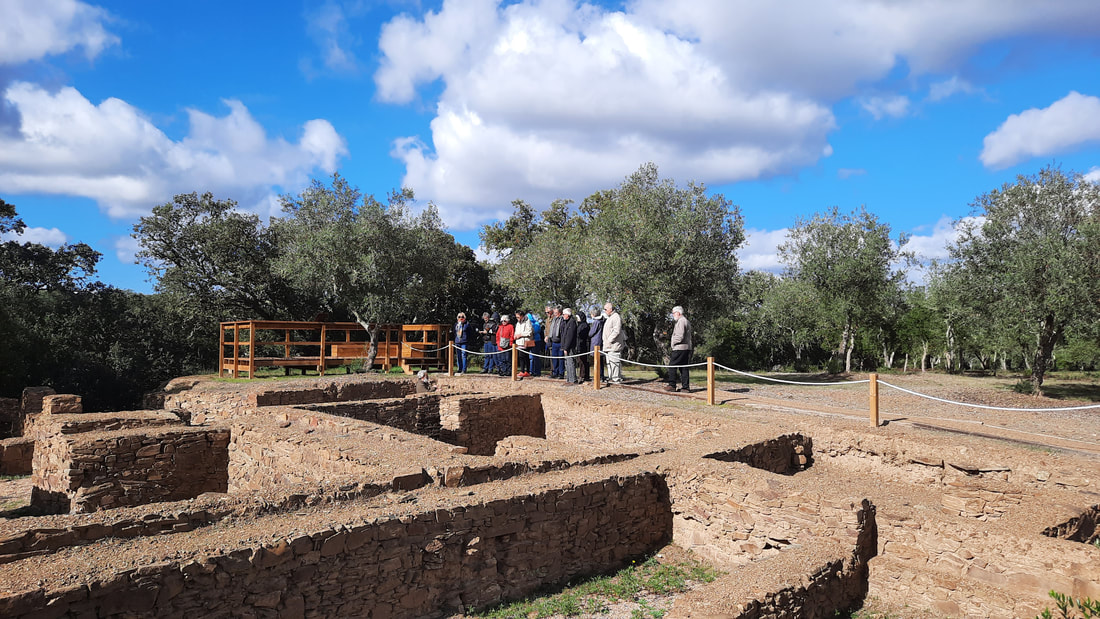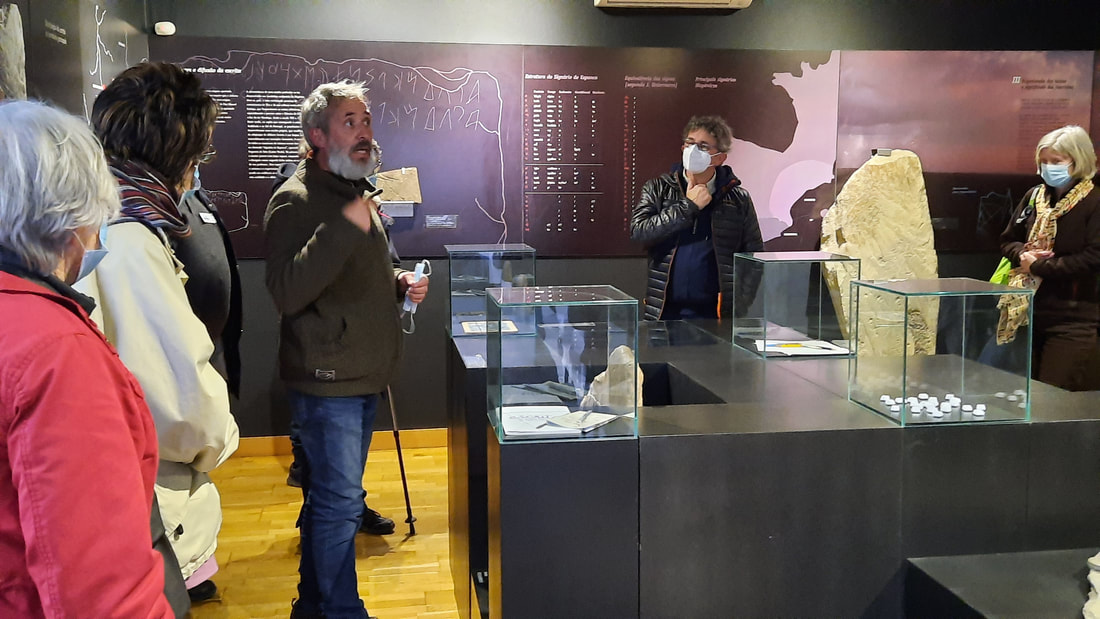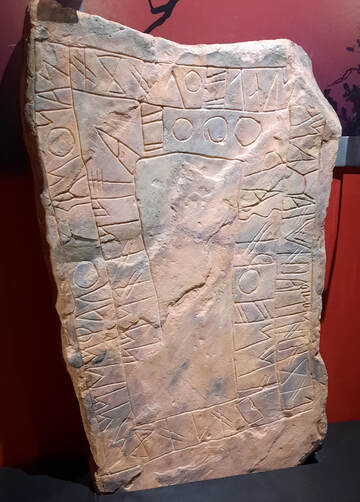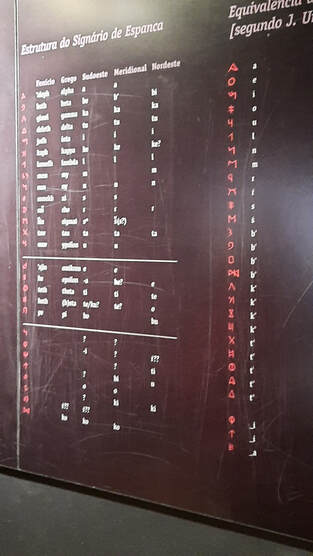November 2021 : Day excursion to Almodôvar :
Visiting the Iron Age Necrópolis, Mesas do Castelinho and the Museum of the South-West script
The excursion was guided by archaeologists Samuel Meiro of the Direcção Regional Cultura do Alentejo and Rui Cortes from the Câmara Municipal de Almodôvar. In 2016, Samuel together with Pedro Barros gave a talk to the AAA about Iron age necropolises and the South-West script. In the mean time the site with the necropolis of Monte Branco and the Mesas do Catelinho has been developed for visitors with extensive boardwalks and information panels and in Almodôvar a museum dedicated to the South-West script was created.
|
After gathering for coffee in Santa-Clara-a-Nova we went on to visit the Necropolis of Monte Branco where Samuel explained us about the custom and layout of the funerary moments of this region during the bronze/iron age.
In the center of the stone circle was the grave, but no bones or artifacts were present anymore. Any artifacts were already removed by grave robbers and any bones would certainly not have survived the acidic soil. The majority of these circles were covered by small mounds of soil. At the head of the mound would be the stella of which here only part is still present. |
During the bronze and iron age small villages and hamlets emerged in the area between the plains of what is today the Lower Alentejo and the mountain ridge that separates this region from the present day Algarve. This area was on the cross roads between the Sado river and the Guadiana river and the Algarve and the Ourique area. It was here that the highest concentration of stellae with the South-West script were found which were associated with funerary monuments.
From the end of the 5th century B.C fortified settlements (as is the case of Mesas do Castelinho), were consolidated all over the Southwest peninsula, including the area of the present day Almodôvar.
Mesas do Castelinho is a fortified settlement founded in the 1st half of the 4th century BC, and occupied until the beginnings of the 2nd century AD, with a pre-Roman populatioin and Roman conquerors promoting urban growth. Between the 9th and 11th centuries AD, there was a small islamic fortification housing Moorish warriors.
As the name implies, it develops around two platforms, the upper (A) and bottom (B) "mesas" (tables), bounded by imposing embankments hiding the walls.
Platform A
The compartments leaning against the wall (right picture) served as housing and iron work spaces with forges and fireplaces. Ceramics were produced locally or in the surrounding area. Ceramics coming from the current Andalusia and Algarve tell us of a population that received goods like fish-salting products, wine and olive oil from far away. Remains of domestic and wild animals, seeds or spindle weights are testimonies of agricultural activities, raising of livestock and hunting wild animals.
The barren area in the picture to the right is were in 1986 a landowner went through it with a bulldozer in search of the legendary treasure being hidden here. Luckily he could be stopped in time before further destruction took place.
The barren area in the picture to the right is were in 1986 a landowner went through it with a bulldozer in search of the legendary treasure being hidden here. Luckily he could be stopped in time before further destruction took place.
Platform B
Platform B refers to the Roman period. There were several parallel streets with houses, workshops (mainly metallurgy), second floors etc. A stella with southwestern script was found here, taken from an unknown place and reused as a pavement stone. The remains of Roman culture are profuse with fine tablewear ceramics and amphorae carrying garum, wine and olive oil from other Roman provinces. The administrative restructuring of the Roman province of Lusitania and the advent of new towns and roads led to the decline of Mesas do Castellinho in the 2nd century AD.
After lunch in Almodôvar we visited the Museum of the Southwestern script.
The museum housed many stellae with the Southwestern script. By comparison with other known writings (e.g. Phenician, Greek) it had been possible to associate the signs with certain alphabetic characters. But, even though it can be read it does not mean that the meaning of the writings is understood.
The museum housed many stellae with the Southwestern script. By comparison with other known writings (e.g. Phenician, Greek) it had been possible to associate the signs with certain alphabetic characters. But, even though it can be read it does not mean that the meaning of the writings is understood.
